Source(google.com.pk)
Palestina Wall Biography
The Western Wall (also known as Wailing Wall, Kotel or the Burāq Wall) is located in the Old City of Jerusalem. It is one of the most significant sites outside of the Temple Mount for Jewish people because it is a remnant of the ancient wall that surrounded the Jewish Temple’s courtyard.
Jews have been visiting this location for centuries as a place of pilgrimage and they also perform their prayers there. In 19th centuries and after, a several attempts were made in order to purchase rights to the wall, but none were successful.A Palestinian climbs the separation wall at Bethlehem checkpoint between Jerusalem and the West Bank city of Bethlehem, Friday, March 30, 2012. Israeli security forces in riot gear Friday confronted Palestinian demonstrators, anticipating possible clashes along Israel’s frontiers on “Land Day”. The “Land Day” rallies are an annual event marked by Palestinians who protest against discriminatory Israeli land policies.The Wall is not being built on, or in most cases near the 1967 Green Line, but rather cuts deep into the West Bank, expanding Israel’s theft of Palestinian land and resources. In total, 85% of the Wall is located in the West Bank.
When completed, the Wall and its associated regime will de facto annex some 46% of the West Bank, isolating communities into Bantustans, ghettos and “military zones”.
This means that the Palestinian population in the West Bank and Gaza Strip, including almost 1.5 million refugees, will be encircled on only 12% of mandate Palestine.
Some 12% of Palestinians in the West Bank will be living in the closed military zone of the Jordan Valley or surrounded on three or four sides by the Wall or isolated between it and the green line. They face increasingly unbearable living conditions - the loss of land, markets, movement and livelihoods - and many will face expulsion.
This includes over 200,000 Palestinians of East Jerusalem, who will be totally isolated from the rest of the West Bank. 98% of the settler population will be included in the de facto annexed areas.
The Wall is not a new “idea” - since 1994 the Gaza Strip has been surrounded by a barrier that cuts off Palestinians there from the rest of the world.
The Apartheid Wall’s Location and Costs
In November 2000 Israeli Prime Minister Barak (Labour Party) approved the first project to build a “barrier”. Construction of the Wall, including land confiscation and the uprooting of trees, began in June 2002 west of Jenin.
As of summer 2010, 520 km of the planned 810 km, or 64%, had been completed. Wall construction was slow for most of 2010 as a result of worries about the financial crisis and ongoing court cases. Instead of building new portions of the Wall, work focused on modifications in the areas of Bil’in, Jayyus and around Jerusalem.
In the latter half of 2010, there was renewed work in Jerusalem where the focus was on closing gaps in certain areas. In Bethlehem, Wall construction has restarted in al Walaja village, where the village will be surrounded on all sides. Work is also ongoing in Beit Jala, where the Wall is being built along a settler road.
The Jordan Valley remains almost completely isolated from the rest of the West Bank as a closed military zone.
According to Israeli military officials, the Wall’s total length will be some 810 km. The cost of the Wall is now estimated at $2.1 billion, and each km costs approximately $2 million. In addition, the Occupation has spent 2 billion shekels to construct alternative roads and tunnels.
The Wall has destroyed a large amount of Palestinian farmland and usurped water supplies, including the biggest aquifer in the West Bank. 78 Palestinian villages and communities with a total population of 266,442 will be isolated as follows:
Villages surrounded by Wall, settlements and settler roads - 257,265 Palestinians.
Villages isolated between Wall and Green Line - 8,557 Palestinians
Villages isolated and residents threatened with expulsion - 6,314 Palestinians.
The so-called “disengagement”, “modifications”, “convergence” and “development” are all part of the Israeli rhetoric that hides the overall strategy for the complete colonization of the West Bank and the expulsion or enslavement of the Palestinian population.
The “modification” of the path of the Wall, far from being a benefit for the local population, often only returns a fraction of what was stolen. It also serves to distract from the ICJ ruling, which calls for the dismantling of the Wall, not the rerouting of small sections. In addition, these modifications often ensure that the lands that remain isolated behind the Wall cannot be accessed by their owners, effectively annexing them. Instead of dismantling settlements, the Occupation continues to expand them, in particular those located around Jerusalem and Bethlehem.



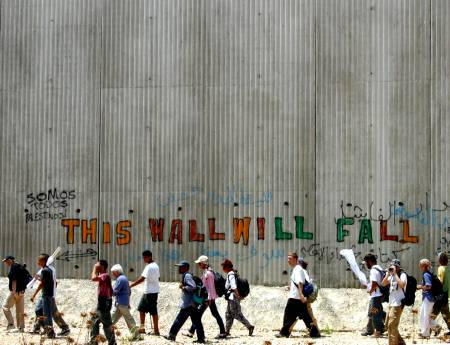
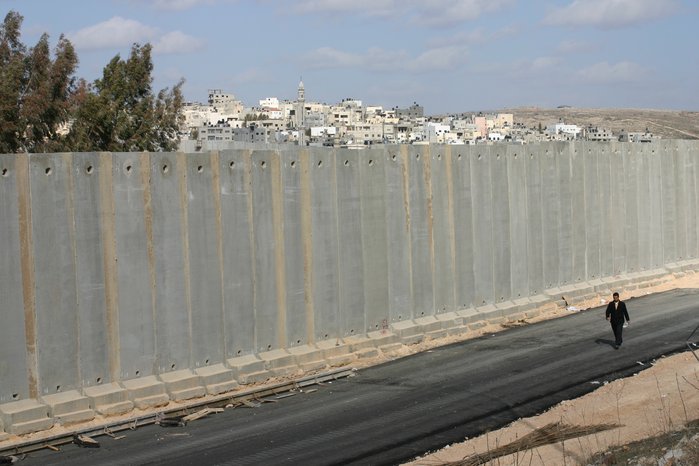
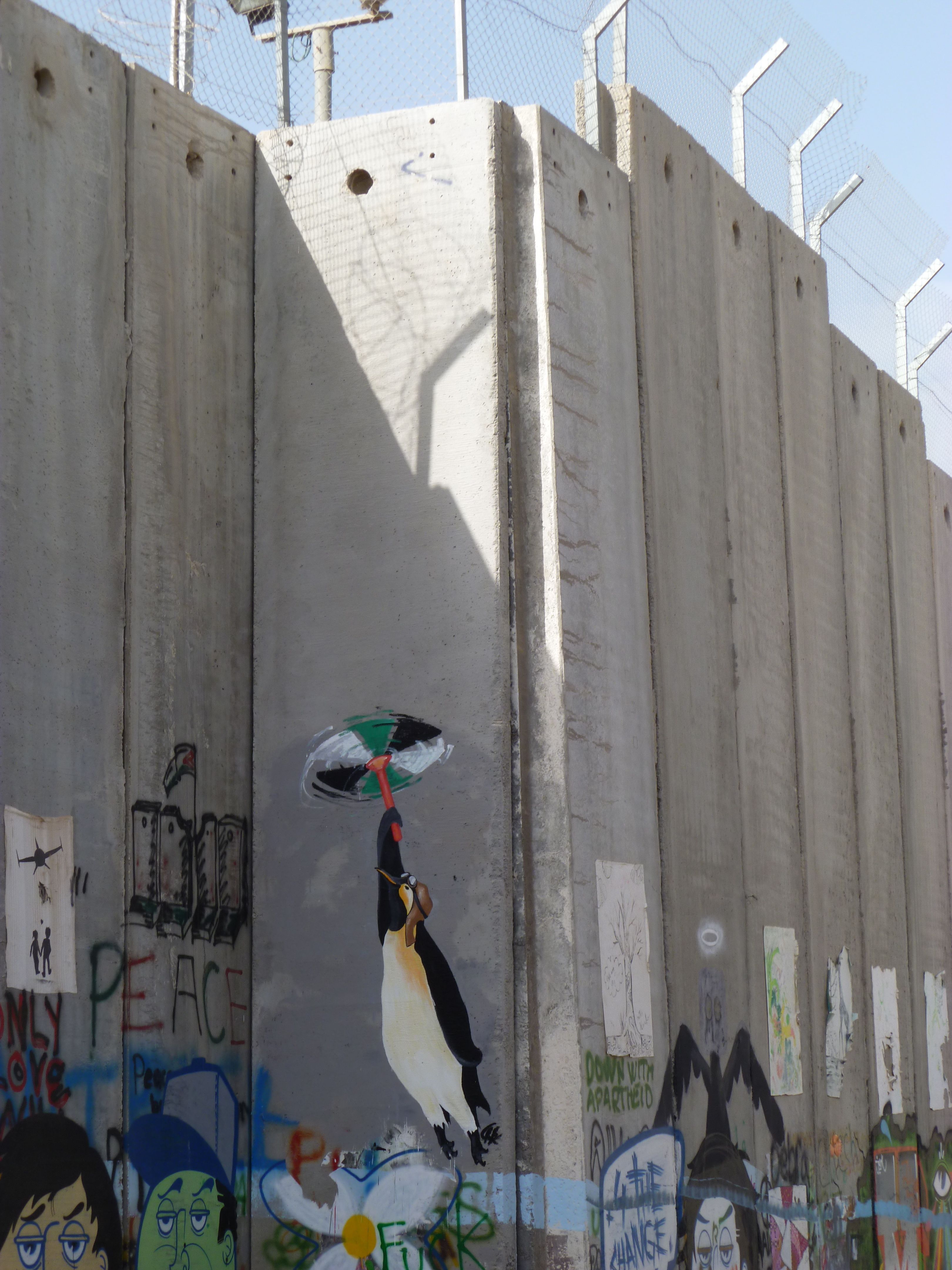


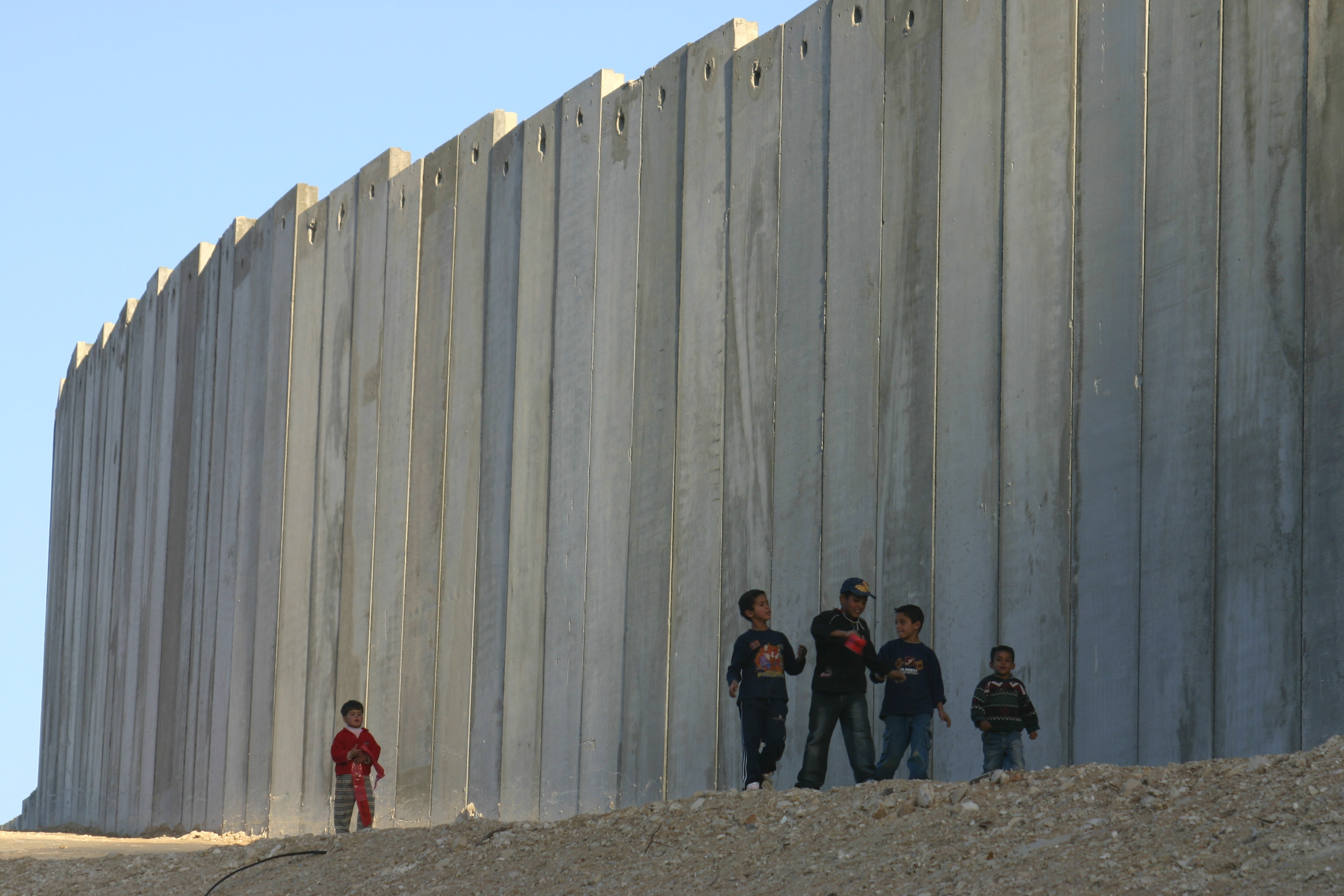
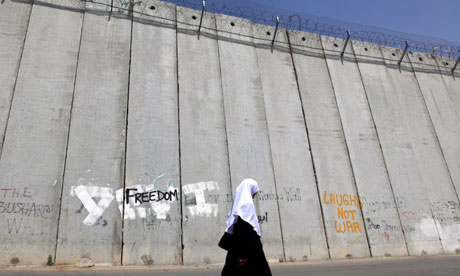
Palestina Wall Biography
The Western Wall (also known as Wailing Wall, Kotel or the Burāq Wall) is located in the Old City of Jerusalem. It is one of the most significant sites outside of the Temple Mount for Jewish people because it is a remnant of the ancient wall that surrounded the Jewish Temple’s courtyard.
Jews have been visiting this location for centuries as a place of pilgrimage and they also perform their prayers there. In 19th centuries and after, a several attempts were made in order to purchase rights to the wall, but none were successful.A Palestinian climbs the separation wall at Bethlehem checkpoint between Jerusalem and the West Bank city of Bethlehem, Friday, March 30, 2012. Israeli security forces in riot gear Friday confronted Palestinian demonstrators, anticipating possible clashes along Israel’s frontiers on “Land Day”. The “Land Day” rallies are an annual event marked by Palestinians who protest against discriminatory Israeli land policies.The Wall is not being built on, or in most cases near the 1967 Green Line, but rather cuts deep into the West Bank, expanding Israel’s theft of Palestinian land and resources. In total, 85% of the Wall is located in the West Bank.
When completed, the Wall and its associated regime will de facto annex some 46% of the West Bank, isolating communities into Bantustans, ghettos and “military zones”.
This means that the Palestinian population in the West Bank and Gaza Strip, including almost 1.5 million refugees, will be encircled on only 12% of mandate Palestine.
Some 12% of Palestinians in the West Bank will be living in the closed military zone of the Jordan Valley or surrounded on three or four sides by the Wall or isolated between it and the green line. They face increasingly unbearable living conditions - the loss of land, markets, movement and livelihoods - and many will face expulsion.
This includes over 200,000 Palestinians of East Jerusalem, who will be totally isolated from the rest of the West Bank. 98% of the settler population will be included in the de facto annexed areas.
The Wall is not a new “idea” - since 1994 the Gaza Strip has been surrounded by a barrier that cuts off Palestinians there from the rest of the world.
The Apartheid Wall’s Location and Costs
In November 2000 Israeli Prime Minister Barak (Labour Party) approved the first project to build a “barrier”. Construction of the Wall, including land confiscation and the uprooting of trees, began in June 2002 west of Jenin.
As of summer 2010, 520 km of the planned 810 km, or 64%, had been completed. Wall construction was slow for most of 2010 as a result of worries about the financial crisis and ongoing court cases. Instead of building new portions of the Wall, work focused on modifications in the areas of Bil’in, Jayyus and around Jerusalem.
In the latter half of 2010, there was renewed work in Jerusalem where the focus was on closing gaps in certain areas. In Bethlehem, Wall construction has restarted in al Walaja village, where the village will be surrounded on all sides. Work is also ongoing in Beit Jala, where the Wall is being built along a settler road.
The Jordan Valley remains almost completely isolated from the rest of the West Bank as a closed military zone.
According to Israeli military officials, the Wall’s total length will be some 810 km. The cost of the Wall is now estimated at $2.1 billion, and each km costs approximately $2 million. In addition, the Occupation has spent 2 billion shekels to construct alternative roads and tunnels.
The Wall has destroyed a large amount of Palestinian farmland and usurped water supplies, including the biggest aquifer in the West Bank. 78 Palestinian villages and communities with a total population of 266,442 will be isolated as follows:
Villages surrounded by Wall, settlements and settler roads - 257,265 Palestinians.
Villages isolated between Wall and Green Line - 8,557 Palestinians
Villages isolated and residents threatened with expulsion - 6,314 Palestinians.
The so-called “disengagement”, “modifications”, “convergence” and “development” are all part of the Israeli rhetoric that hides the overall strategy for the complete colonization of the West Bank and the expulsion or enslavement of the Palestinian population.
The “modification” of the path of the Wall, far from being a benefit for the local population, often only returns a fraction of what was stolen. It also serves to distract from the ICJ ruling, which calls for the dismantling of the Wall, not the rerouting of small sections. In addition, these modifications often ensure that the lands that remain isolated behind the Wall cannot be accessed by their owners, effectively annexing them. Instead of dismantling settlements, the Occupation continues to expand them, in particular those located around Jerusalem and Bethlehem.
Palestina Wall

Palestina Wall

Palestina Wall

Palestina Wall

Palestina Wall

Palestina Wall

Palestina Wall

Palestina Wall

Palestina Wall

Palestina Wall

Palestina Wall
No comments:
Post a Comment